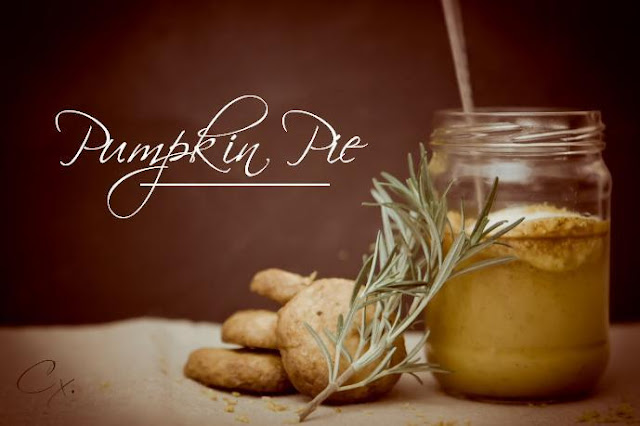When one has close to a dozen pumpkins stacked in a corner of the kitchen, meal times become a game of finding ways to disguise pumpkin in anything and everything. As delicious as they may be, there are only so many times that I can eat variations of Parmesan-crusted pumpkin wedges (Gruyere and torn basil is an excellent combination by the way), baked oatmeal with pumpkin and maple-soaked raisins or chickpea-hiding-pumpkin-patties before I feel inclined to start pulling my hair out.
I've never had a proper pumpkin pie before (the orange-coloured cream masquerading as said pie at Cotton Duck doesn't count), so I thought I'd give that a go. I wanted a really beefed up version full of warming spices and wintry nuances so I scoured through my books for a few ideas which I mashed together into a single recipe.
Spices from a traditional American diner dessert - sweet potato pie were added and the amount of sugar scaled back to let the natural sweetness of the pumpkin sing. Instead of making a classic pie with flaky pastry, I cooked the pumpkin pie filling in jars and dished them up with homemade yoghurt, dried lemon peel and some shortbread biscuits infused with lemon and rosemary.
Dried lemon peel
1 lemonPeel lemon with a vegetable peeler.
100 g water
50 g castor sugar
Remove white pith from the peel with a small, sharp knife.
Cut peel into thin strips about 2 mm wide.
Place water and sugar into a small pot and bring to the boil.
Add lemon peel and bring back to the boil.
Allow to simmer for 2 minutes.
Remove pot from heat and cool to room temperature.
Strain out the peel and drain well.
Spread peel onto a flat tray lined with baking paper or a silpat mat.
Dehydrate at 55ºC for 3-4 hours or until crisp.
Cool to room temperature.
Store in an airtight container.
Pumpkin pie
1 kg pumpkin, unpeeledSlice pumpkin into 2cm thick wedges.
30 g olive oil
134 g castor sugar
3 g salt
2 g ground ginger
2 g ground cinnamon
1/2 g ground nutmeg
1/2 g ground allspice
4 g vanilla paste
7 g all-purpose flour
260 g evaporated milk
20 g water
10 g lemon juice
2 eggs
Brush with olive oil and roast at 200ºC for 40 mins or until pumpkin is cooked through and caramelised.
Remove from oven and set aside to cool to room temperature.
When cool to the touch, scrape away pumpkin flesh from skins and set aside in a bowl.
Discard skins.
Place 320 g of pumpkin flesh in a food processor with sugar, salt, spices, vanilla paste and flour.
Blend until smooth.
Whisk together evaporated milk, water, lemon juice and eggs in a bowl.
Add liquids to pumpkin mixture and blend to combine thoroughly.
Transfer to a jug and half fill 5 small 300 ml jars.
Place jars into a roasting tray and fill with boiling water.
Bake at 160ºC for 35 mins or until pumpkin is just set in the middle when shaken.
Transfer jars to a rack to cool slightly.
Serve with homemade yoghurt and a sprinkling of dried lemon zest.











